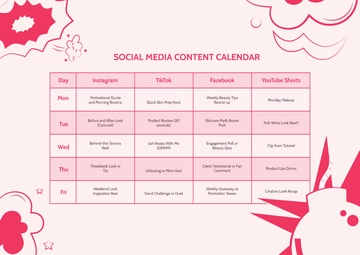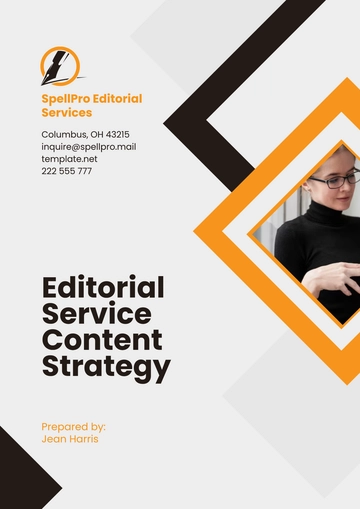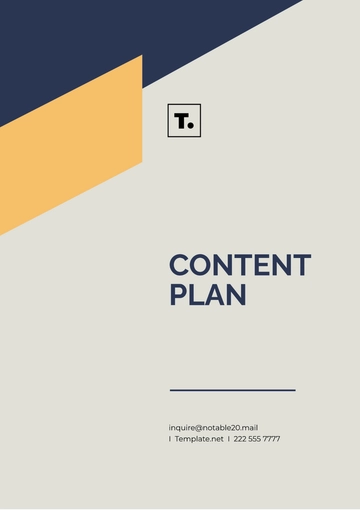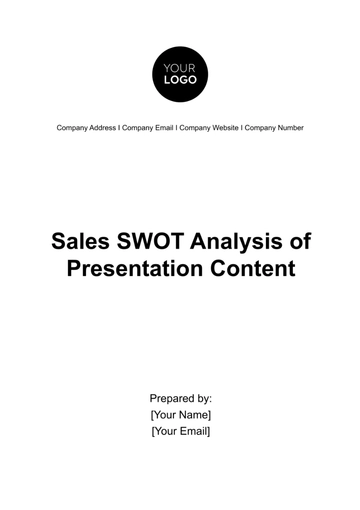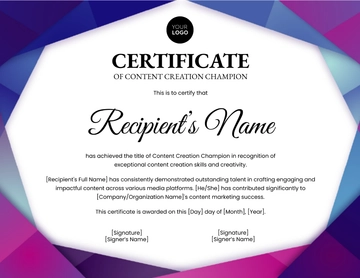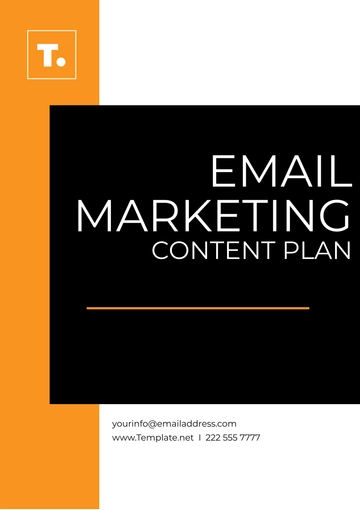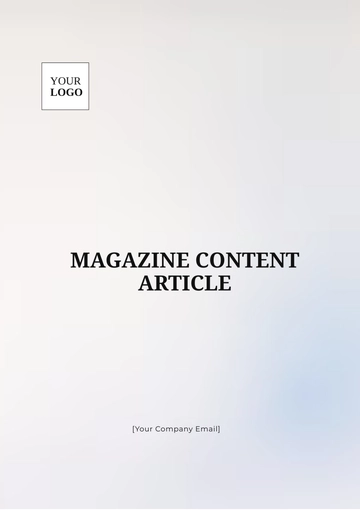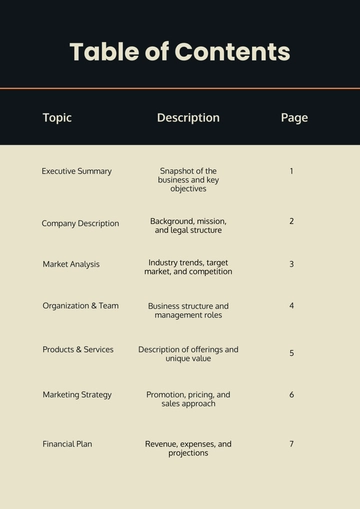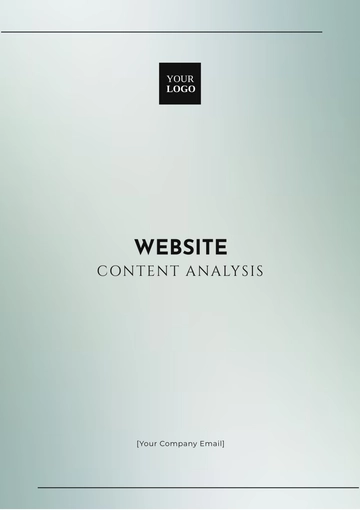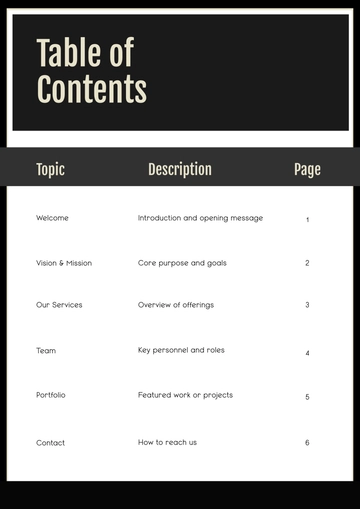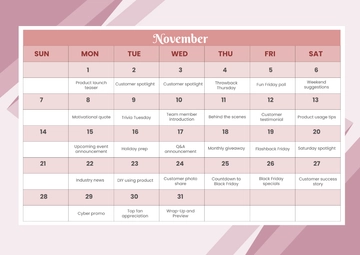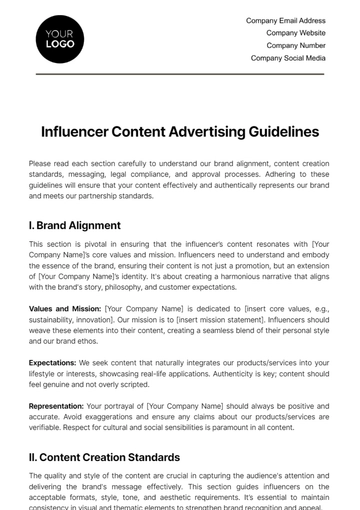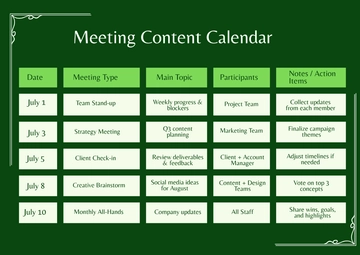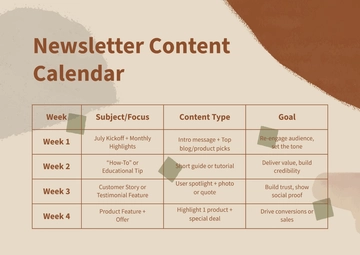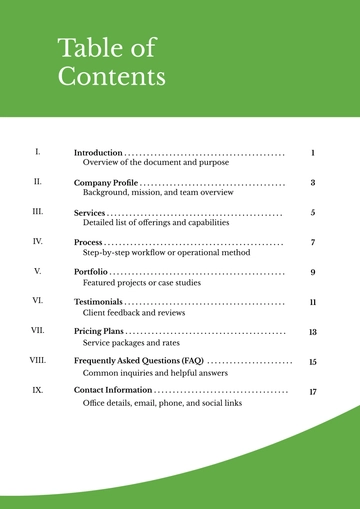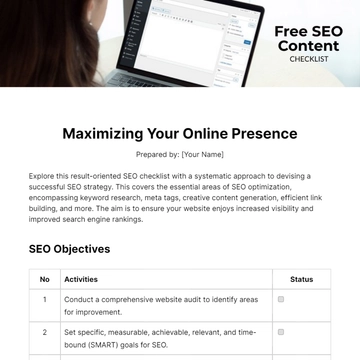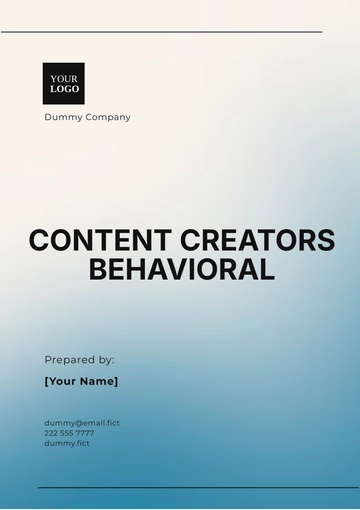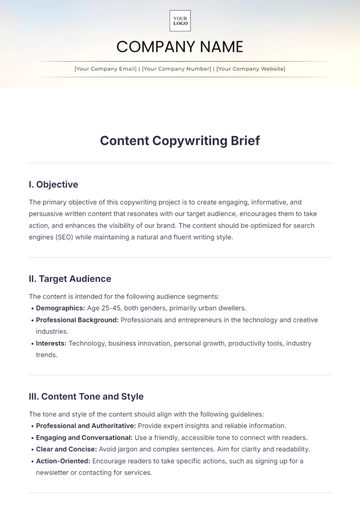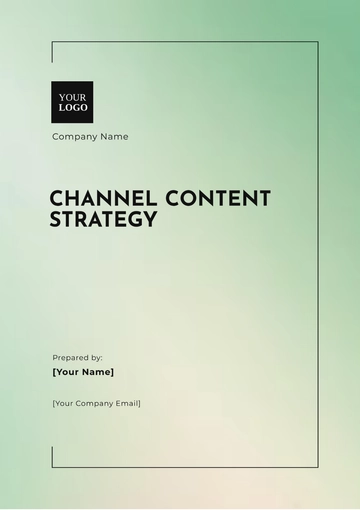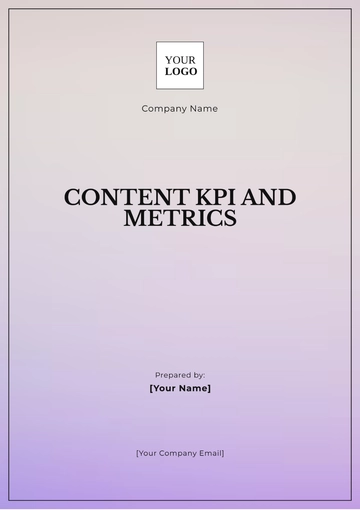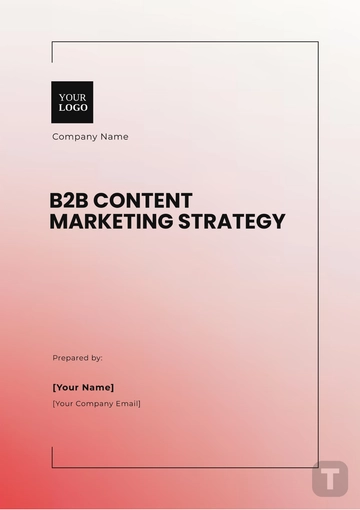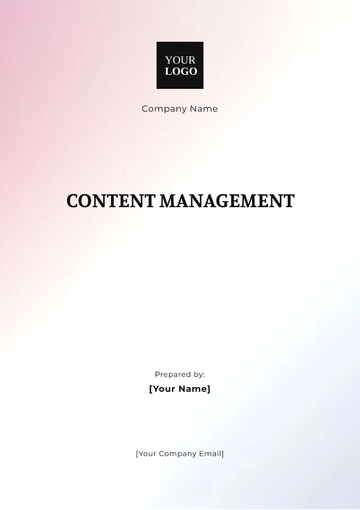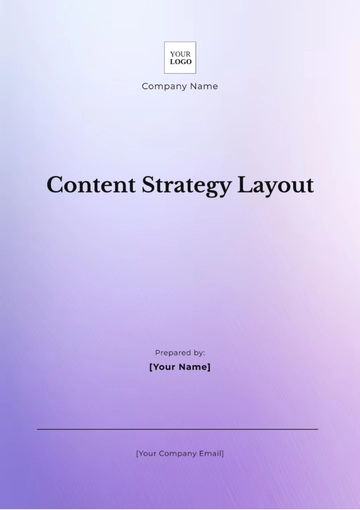Free Content Marketing Campaign Strategy
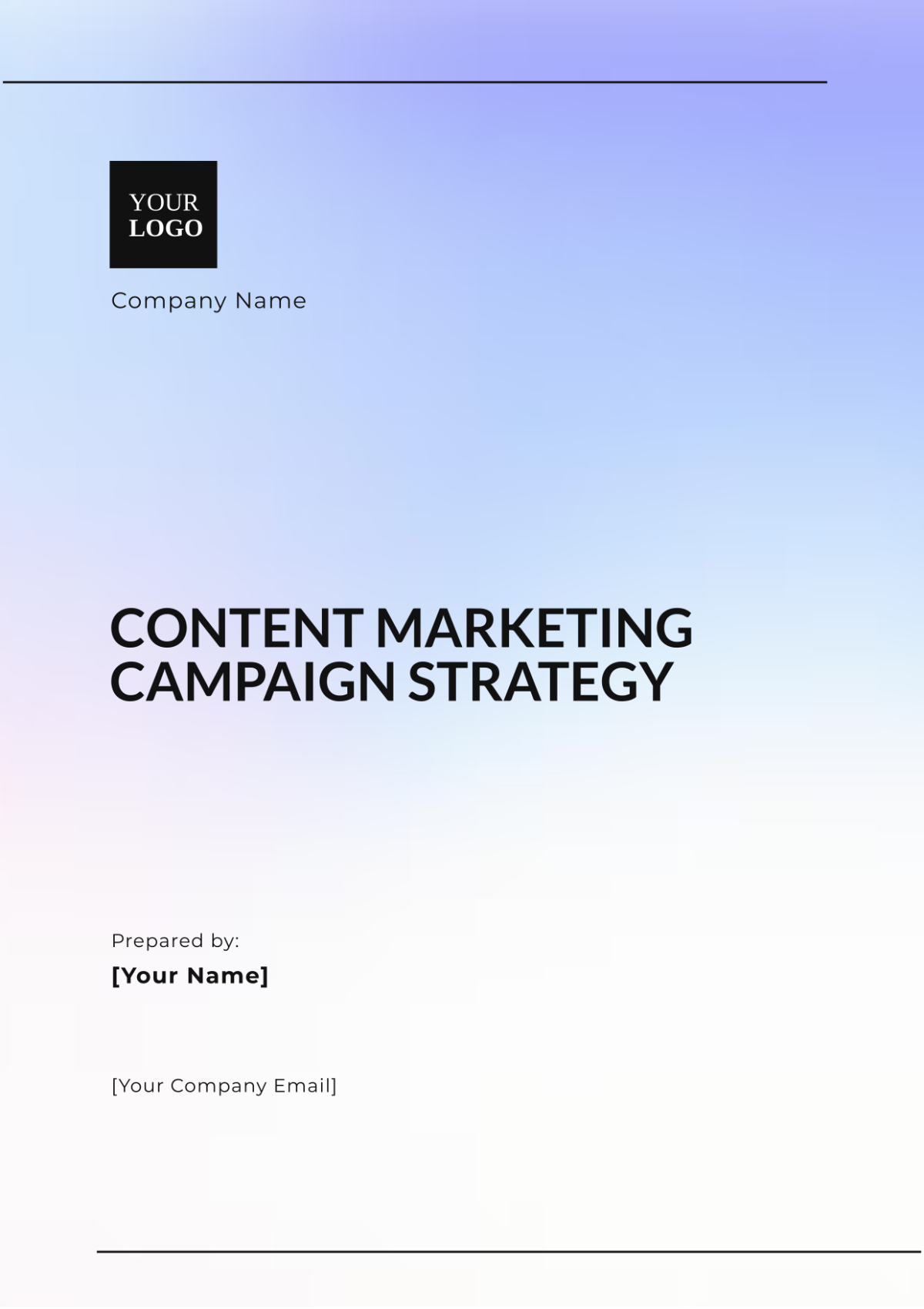
I. Executive Summary
The Content Marketing Campaign Strategy for [Your Company Name] aims to enhance brand visibility, generate leads, and engage with the target audience. This strategy outlines the objectives, target audience, content themes, and distribution plans to ensure a cohesive and effective content marketing effort for the year 2051.
II. Goals and Objectives
Increase Brand Awareness: Achieve a 30% increase in brand recognition within the target market by Q4 2051.
Generate Leads: Secure 1,000 new leads through content marketing efforts by the end of 2051.
Enhance Customer Engagement: Improve customer engagement metrics (likes, shares, comments) by 25% across all social media platforms by Q3 2051.
Establish Thought Leadership: Publish 20 thought leadership pieces that position [Your Company Name] as an industry leader by Q2 2051.
Improve SEO Rankings: Achieve top 5 search engine rankings for 10 targeted keywords by the end of 2051.
III. Target Audience
Our target audience consists of tech-savvy professionals aged 25-45, primarily located in urban areas, who are interested in the latest advancements in technology and innovation. This includes IT managers, software developers, and digital marketers looking for cutting-edge solutions to enhance their business operations.
IV. Content Themes and Topics
Theme | Topics |
|---|---|
Emerging Technologies | AI advancements, blockchain applications, the future of quantum computing, and the impact of 5G on business. |
Industry Trends | Market analysis, case studies on successful implementations, and expert predictions for the next decade. |
Best Practices | Guides on cybersecurity, data management, and agile project management. |
Product Insights | In-depth reviews of our latest products, user testimonials, and comparisons with competitors. |
Innovation Leadership | Interviews with industry leaders, innovation success stories, and thought leadership articles. |
V. Content Types and Formats
Content-Type | Format |
|---|---|
Blog Posts | Articles, How-to Guides |
Videos | Tutorials, Webinars |
Infographics | Data Visualizations |
Ebooks | In-depth Guides |
Case Studies | Detailed Reports |
Social Media Posts | Short Updates, Images |
Newsletters | Monthly Digests |
VI. Content Calendar
Month | Content-Type | Theme | Topic |
|---|---|---|---|
January | Blog Post | Emerging Technologies | AI in 2051: What to Expect |
February | Video | Industry Trends | Blockchain's Impact on Global Trade |
March | Infographic | Best Practices | Top 10 Cybersecurity Tips for Businesses |
April | Ebook | Product Insights | The Ultimate Guide to Our Product |
May | Case Study | Innovation Leadership | How [Your Company Name] Leads Innovation |
June | Social Media Post | Industry Trends | Expert Predictions for Tech in 2051 |
July | Blog Post | Emerging Technologies | Quantum Computing: The Next Frontier |
August | Video | Best Practices | Agile Project Management Essentials |
September | Infographic | Product Insights | Comparing Our Product with Competitors |
October | Ebook | Industry Trends | Market Analysis of Tech Innovations |
November | Case Study | Best Practices | Successful Data Management Strategies |
December | Newsletter | All Themes | Year-End Summary and Future Outlook |
VII. Distribution Plan
Content-Type | Distribution Channel | Frequency |
|---|---|---|
Blog Posts | Company Website, LinkedIn | Bi-weekly |
Videos | YouTube, Company Website | Monthly |
Infographics | Instagram, Pinterest | Monthly |
Ebooks | Company Website, Email | Quarterly |
Case Studies | Company Website, LinkedIn | Quarterly |
Social Media Posts | Facebook, Twitter, LinkedIn | Daily |
Newsletters | Monthly |
VIII. Distribution Channels
Channel | Platform | Purpose |
|---|---|---|
Website | Company Blog | Hosting in-depth articles |
Social Media | Facebook, Twitter | Engaging with the audience |
Video | YouTube | Visual content distribution |
Email Campaigns | Direct communication with leads | |
Professional | Networking and thought leadership | |
Visual | Instagram, Pinterest | Infographics and visual content |
IX. Budget and Resources
Resource | Estimated Cost | Allocation |
|---|---|---|
Content Creation | $50,000 | Articles, Videos |
SEO Tools | $10,000 | Keyword Research |
Social Media Ads | $20,000 | Paid Promotions |
Design Software | $5,000 | Infographics |
Training | $5,000 | Team Skill Development |
Miscellaneous | $10,000 | Contingency |
X. Risk Management
Content Saturation: To avoid content fatigue, diversify content types and topics, ensuring freshness and relevance.
Resource Allocation: Regularly review budget and resources to ensure they are sufficient and properly allocated.
SEO Changes: Stay updated with the latest SEO trends and algorithm changes to maintain rankings.
Audience Engagement: Continuously monitor audience feedback and engagement metrics to adjust the strategy as needed.
Content Quality: Implement a strict quality control process to maintain high standards for all published content.
This Content Marketing Campaign Strategy is designed to guide [Your Company Name]'s content marketing efforts in 2051, ensuring effective planning, execution, and measurement of content initiatives.
- 100% Customizable, free editor
- Access 1 Million+ Templates, photo’s & graphics
- Download or share as a template
- Click and replace photos, graphics, text, backgrounds
- Resize, crop, AI write & more
- Access advanced editor
Elevate your brand’s reach with the Content Marketing Campaign Strategy Template from Template.net. This fully customizable tool is editable in our AI Editor Tool, allowing you to tailor every aspect to your unique needs. Streamline your content strategy effortlessly with a template designed to adapt to your goals and drive impactful results.
